Thanks Mike. Fun to do actually. Herding them together is where the hard work is.Very enjoyable comparison Stefan. All of these gray hats are beautiful in their own right, but together...wow! Quite a show.
Want to buy or sell something? Check the classifieds
-
The Fedora Lounge is supported in part by commission earning affiliate links sitewide. Please support us by using them. You may learn more here.
You are using an out of date browser. It may not display this or other websites correctly.
You should upgrade or use an alternative browser.
You should upgrade or use an alternative browser.
Side By Side/ Hat Comparisons
- Thread starter alanfgag
- Start date
Steve, thanks. Makes sense to me. That high density does stand out on a lot of these hats.Stefan, As a follow-up I decided to ask the last technical director of Ebreichsdorfer Filzhutfabrik / S.J. Fraenkel Wien and he told me the following regarding Wild Hare content.
"Wild Hare (Hasenhaar) was widely used for very good qualities. Especially when high density and good grip was required."
My guess is that is the case with these higher density Smooth and Chamois finished German felts.
Nice comparison. How two similar looking hats can feel so vastly different is something you can't explain to a non-collector.A bit Black and Blue today. This may be an odd comparison. However, as I had many of my hats out the other day I couldn't help notice the distinct similarities between my vintage Black Huckel "Flexible" Hagen and my new Blue Worth & Worth Venezia. Each have a 4” crown and a 2 ½” brim and a nearly identical creases in their 1 ½ ribbons. Each have about the same weight felt, the Venezia is 100% hare but not sure of the Huckel. But, the Huckel has a noticeably more rich / velvety feel to it. Also, the leather sweat in the Huckel is like soft butter vs the Venezia which is a bit more stiff. (new?) The Venezia was custom made for me and the Huckel appears to be an "off the rack" 58cm. Both are great hats, but truth be told, the Huckel feels more elegant on the head.
View attachment 127323 View attachment 127324 View attachment 127325 View attachment 127326 View attachment 127327 View attachment 127328
- Messages
- 17,708
- Location
- Maryland
Stefan, Thanks! The Hückel Weilheim hats have a "Waterproof" designation so some type of waterproofing process took place.Steve, thanks. Makes sense to me. That high density does stand out on a lot of these hats.
- Messages
- 17,708
- Location
- Maryland
Hückel Weilheim Chamois 1 vs Hückel Weilheim Chamois 2 (Sun Light)
Click on Photos to Expand
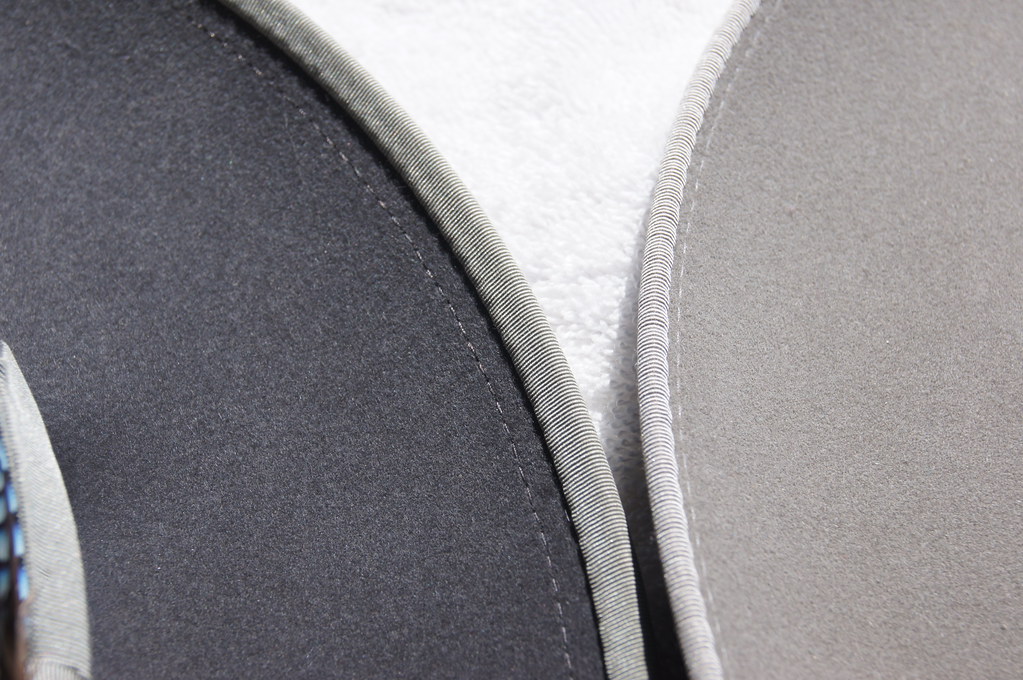
Hückel Weilheim Chevreau 1 vs. Hückel Weilheim Chamois 2 (Sun Light)
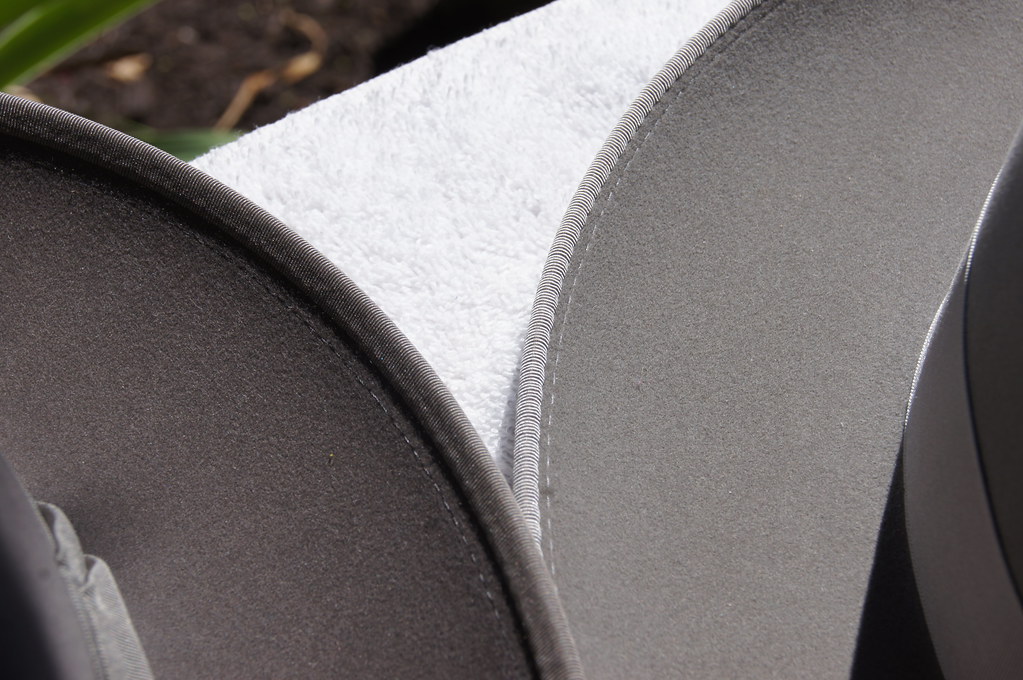
Hückel Weilheim Chevreau 1 vs Hückel Weilheim Chamois 1 (Sun Light)
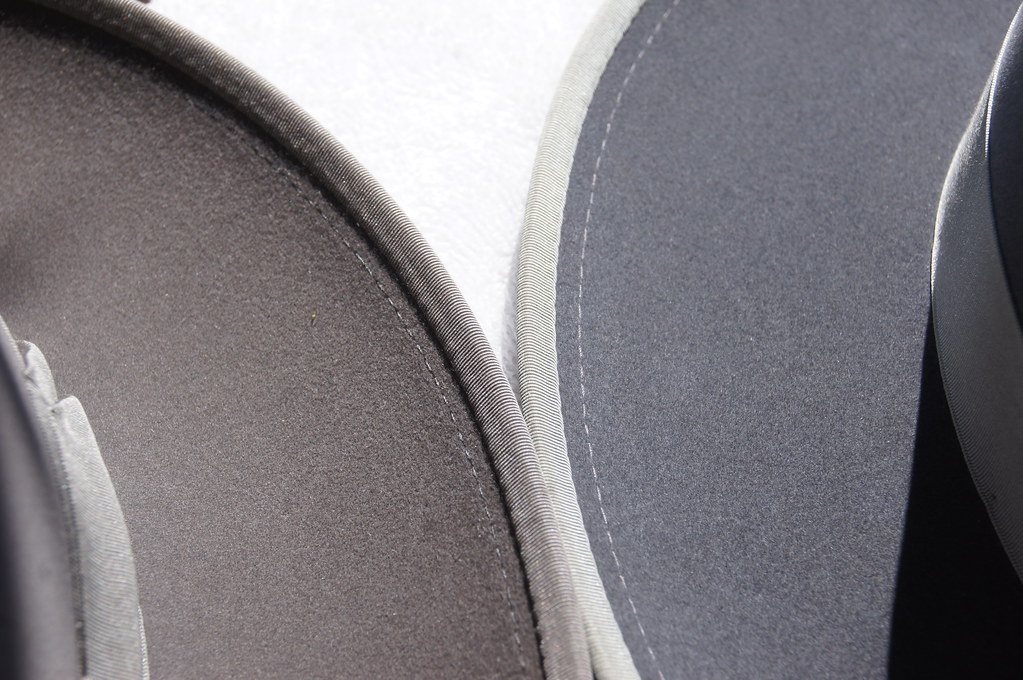
Hückel Weilheim Chevreau 1 vs Hückel Weilheim Chevreau 2 (Sun Light)
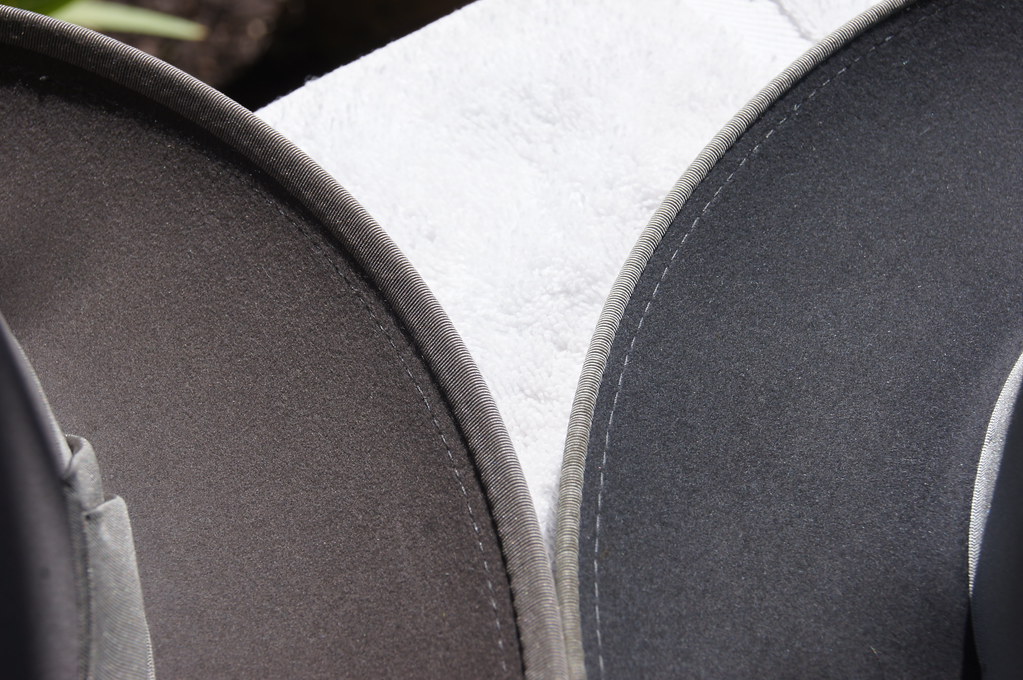
It's really hard to see any difference between the Chamois and Chevreau finishes. I would say the Chamois finish has slightly more fuzz (especially Hückel Weilheim Chamois 2). The felts of both finishes are very dense with slight gloss so possibly made of Wild Hare. The felts are not super pliable as Stefan mentioned with his Chamois but the felts are of very high quality with a very soft hand.
Hückel Weilheim Chamois 2, 1 Hückel Weilheim Chevreau 2, 1, 3 (Flash)
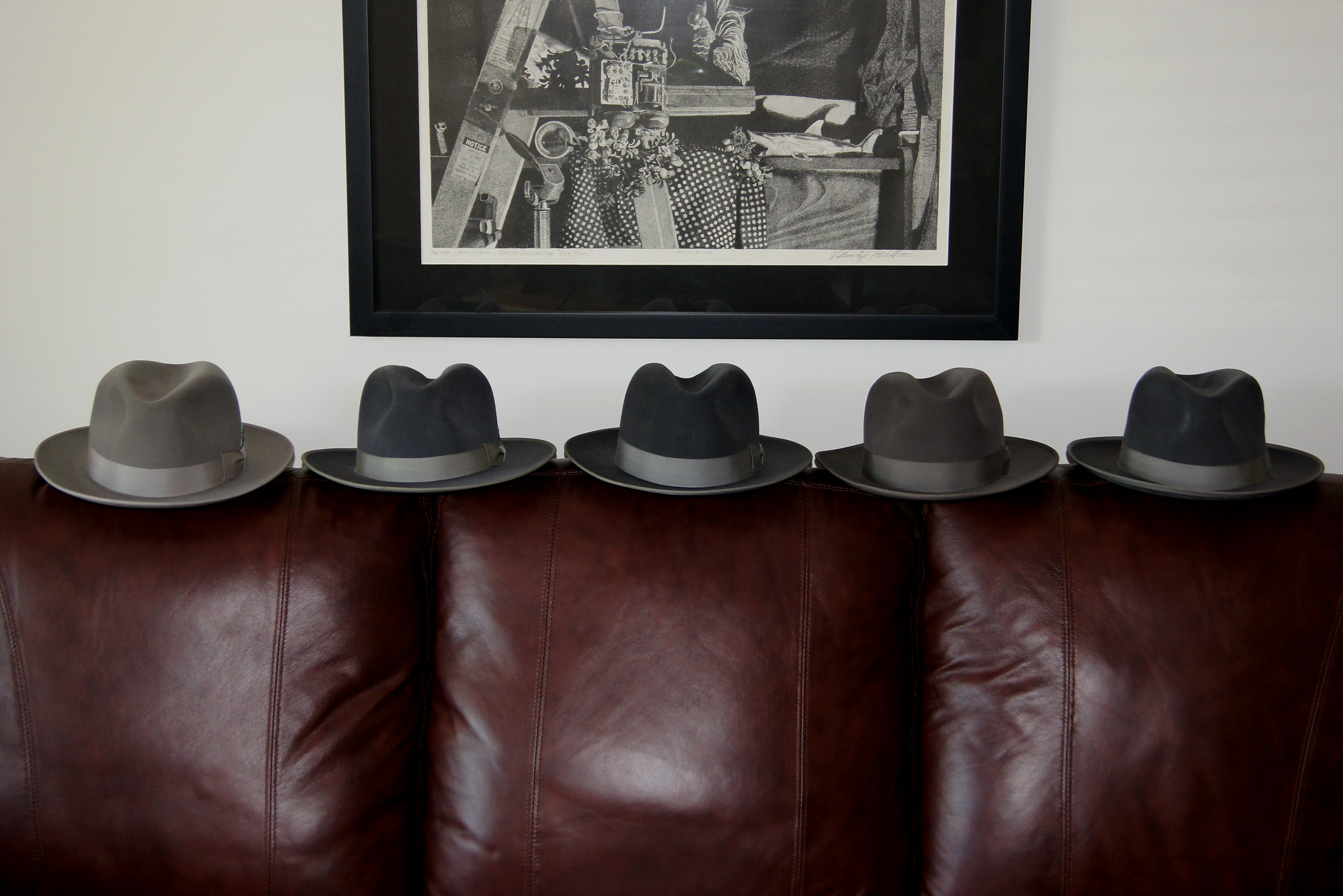
I have three Hückel Weilheim Chevreau and two Hückel Weilheim Chamois in different shades of gray. They are all from the late 1950s very early 1960s. I also have a Hückel Weilheim Chevreau in a fantastic shade of green.
Click on Photos to Expand

Hückel Weilheim Chevreau 1 vs. Hückel Weilheim Chamois 2 (Sun Light)

Hückel Weilheim Chevreau 1 vs Hückel Weilheim Chamois 1 (Sun Light)

Hückel Weilheim Chevreau 1 vs Hückel Weilheim Chevreau 2 (Sun Light)

It's really hard to see any difference between the Chamois and Chevreau finishes. I would say the Chamois finish has slightly more fuzz (especially Hückel Weilheim Chamois 2). The felts of both finishes are very dense with slight gloss so possibly made of Wild Hare. The felts are not super pliable as Stefan mentioned with his Chamois but the felts are of very high quality with a very soft hand.
Hückel Weilheim Chamois 2, 1 Hückel Weilheim Chevreau 2, 1, 3 (Flash)

I have three Hückel Weilheim Chevreau and two Hückel Weilheim Chamois in different shades of gray. They are all from the late 1950s very early 1960s. I also have a Hückel Weilheim Chevreau in a fantastic shade of green.
Last edited:
Daniele Tanto
I'll Lock Up
- Messages
- 4,352
- Location
- Verona - Italia
Bravo Steven. Very well done! Huckel made fantastic hats, what I can say more?Hückel Weilheim Chamois 1 vs Hückel Weilheim Chamois 2 (Sun Light)
Click on Photos to Expand

- Messages
- 17,708
- Location
- Maryland
Daniele, Thank you! Hückel Weilheim hats in gray shades must have been popular.
- Messages
- 17,708
- Location
- Maryland
Hückel Weilheim Chamois 2 vs Hückel Weilheim Chamois 1 (Flash)
Click on Photos to Expand
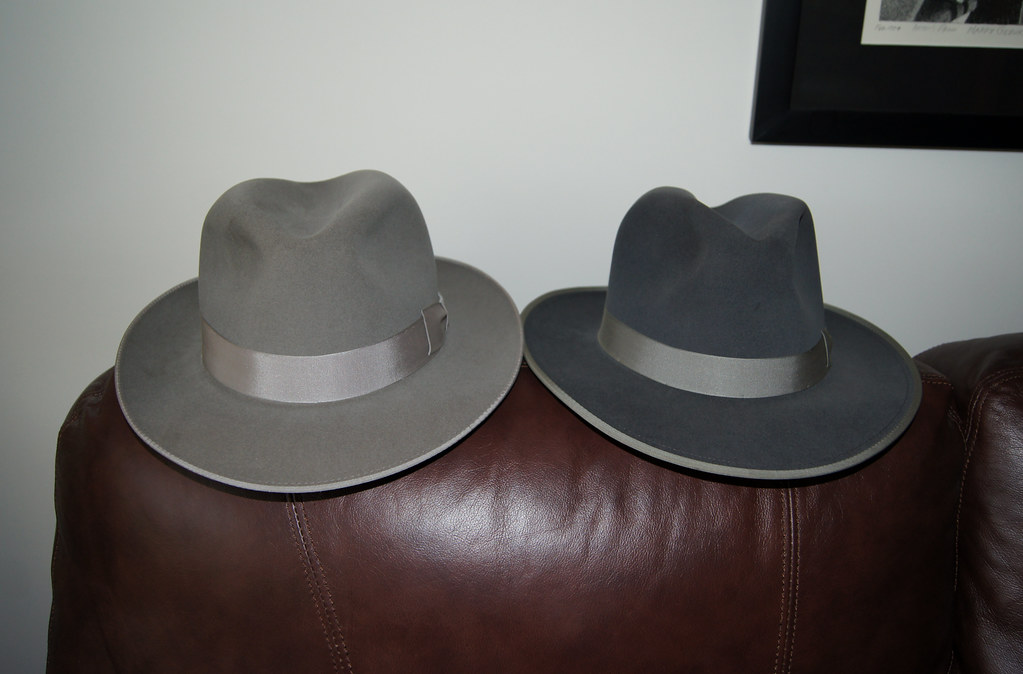
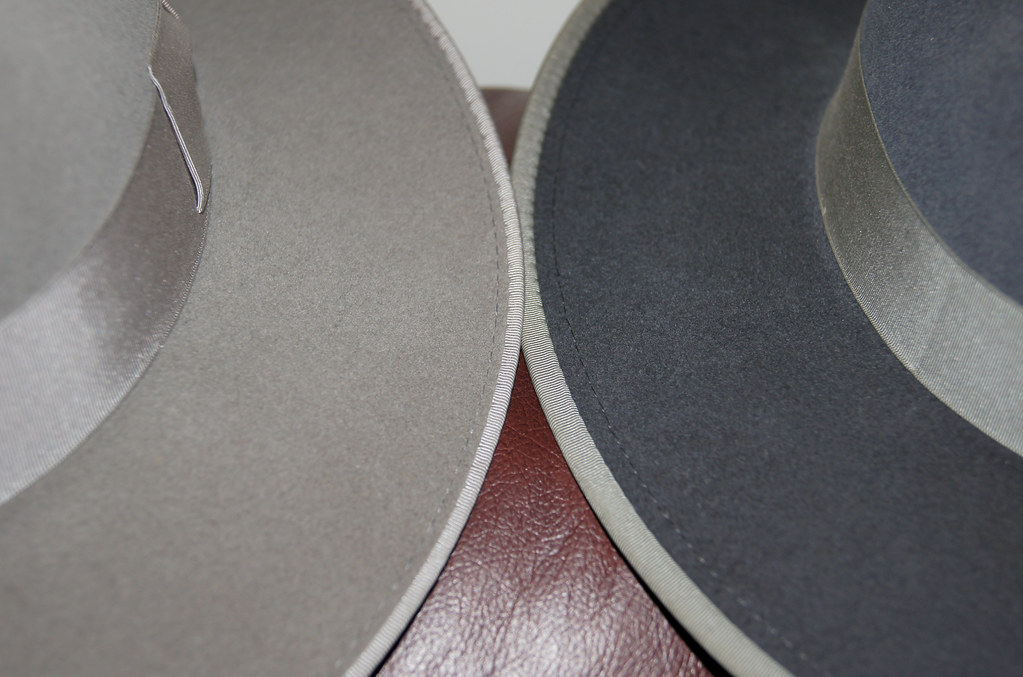
Hückel Weilheim Chamois 2 vs Hückel Weilheim Chevreau 2 (Flash)
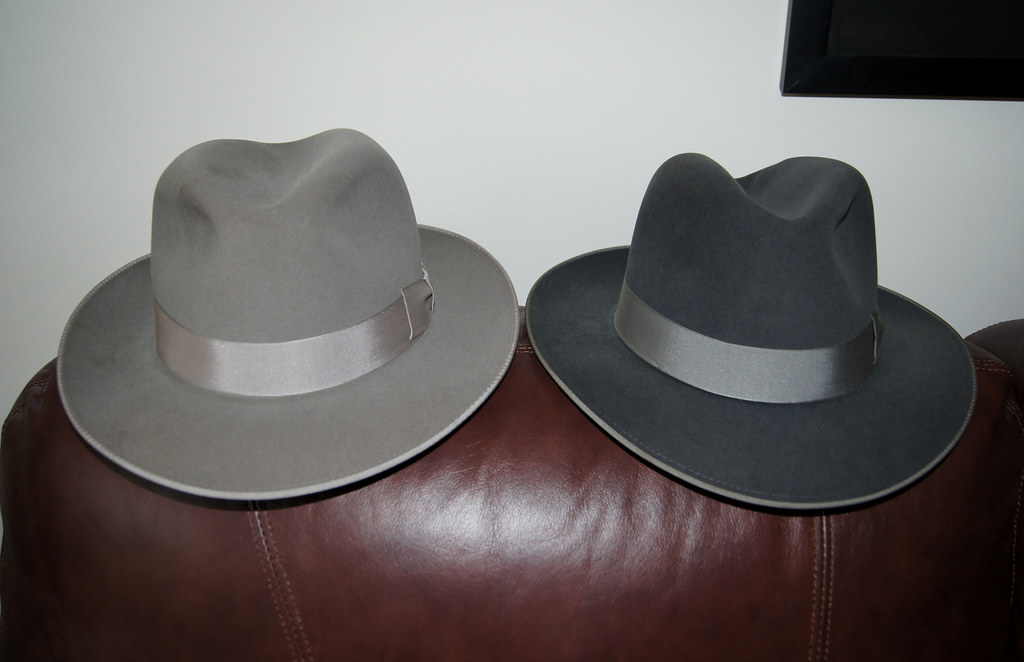
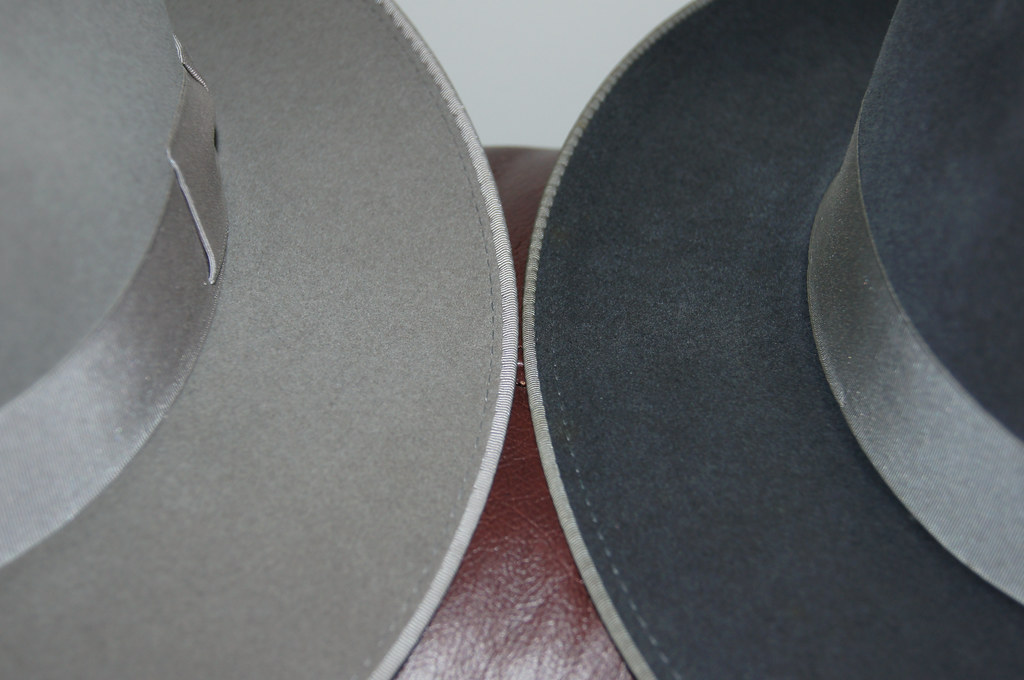
Hückel Weilheim Chamois 2 vs Hückel Weilheim Chevreau 1 (Flash)
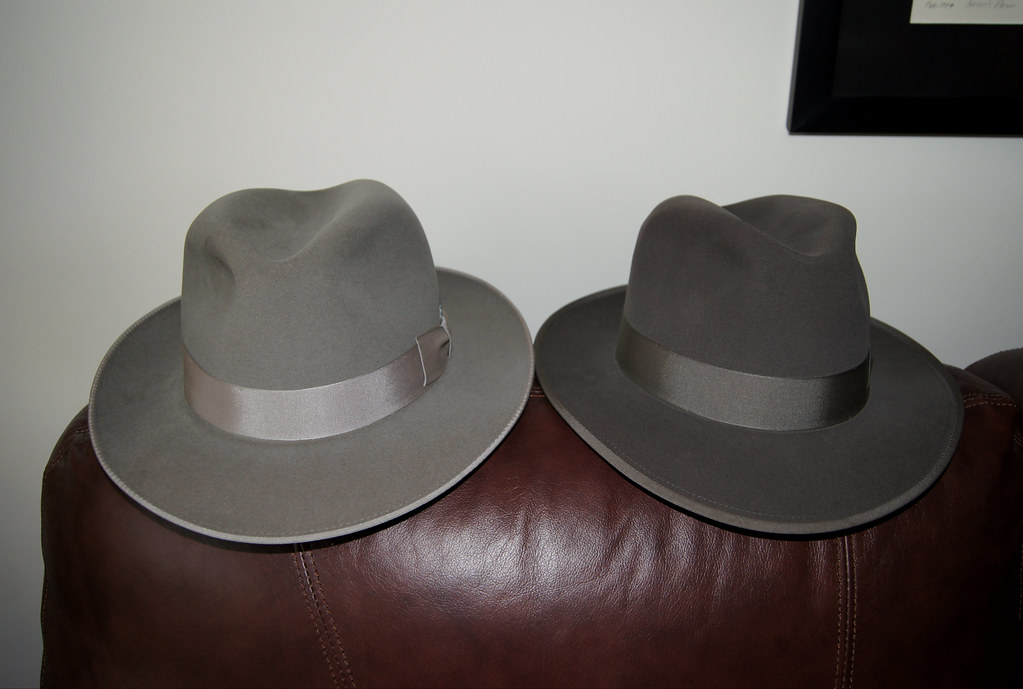
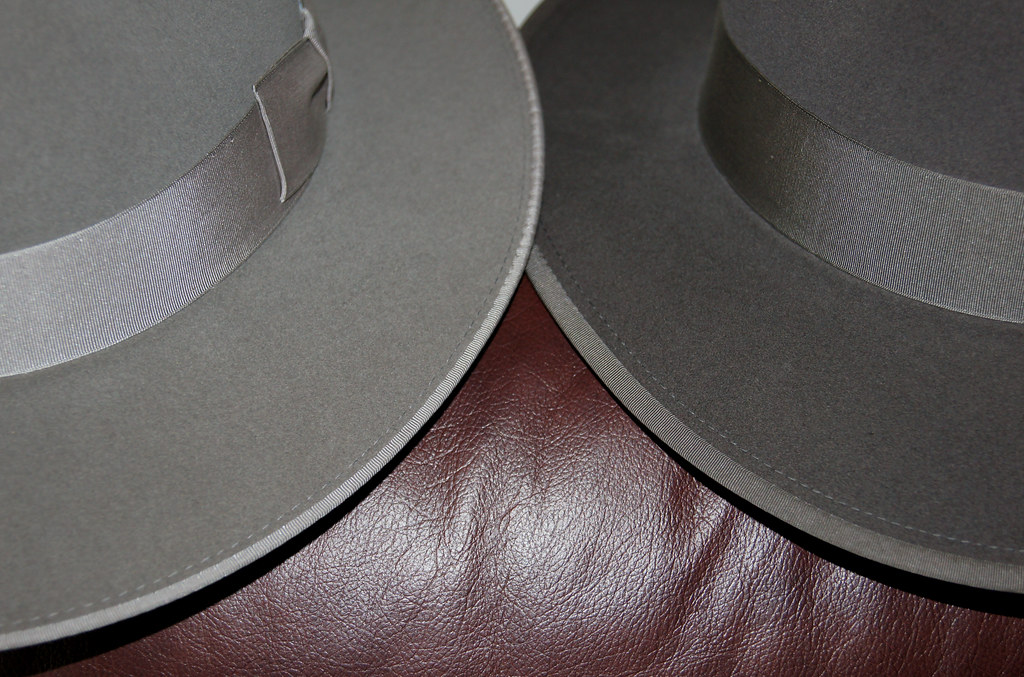
Hückel Weilheim Chamois 1 vs Hückel Weilheim Chevreau 1 (Flash)
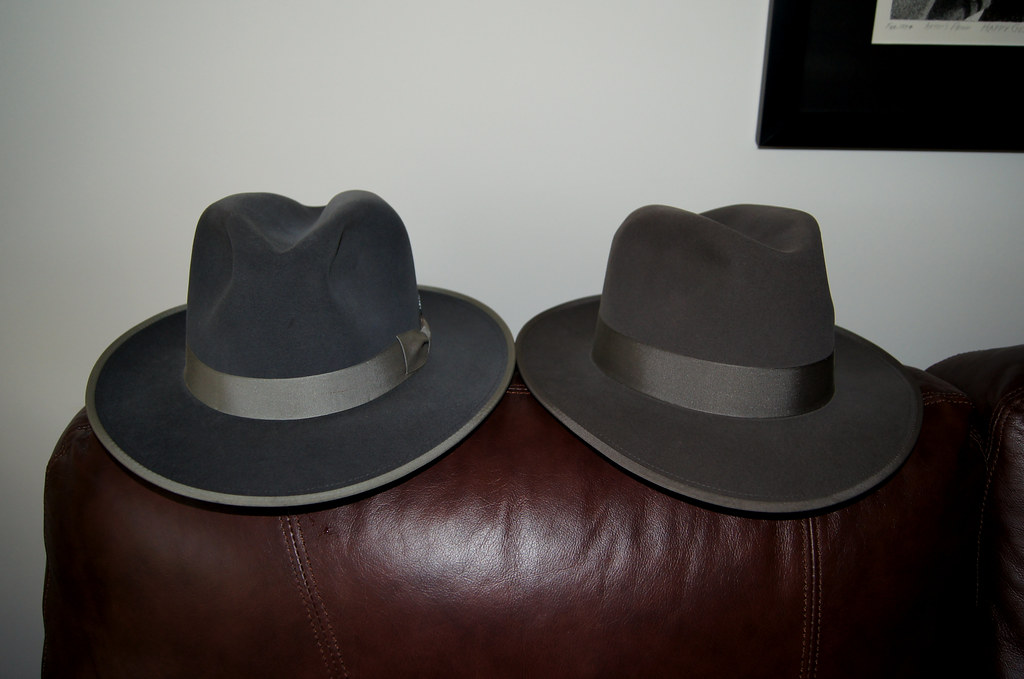
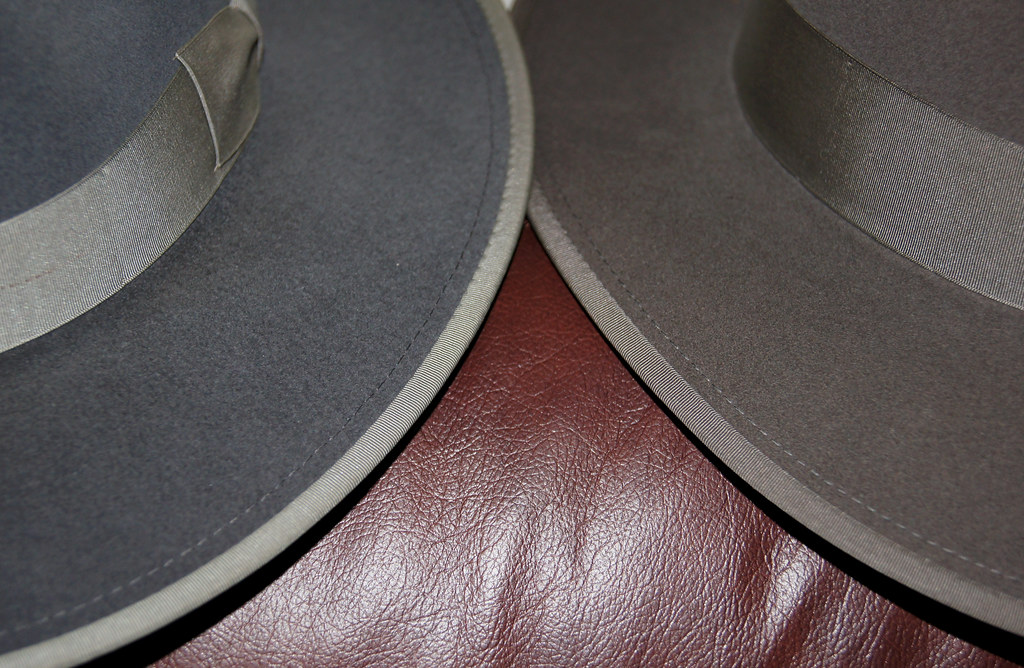
Hückel Weilheim Chamois 1 vs Hückel Weilheim Chevreau 2 (Flash)
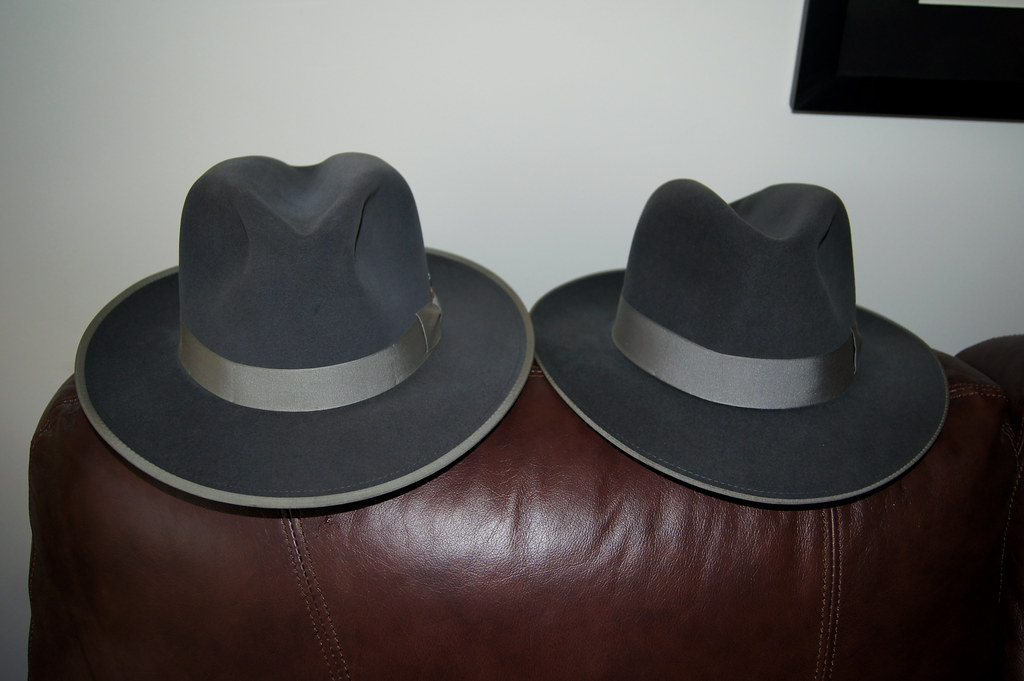
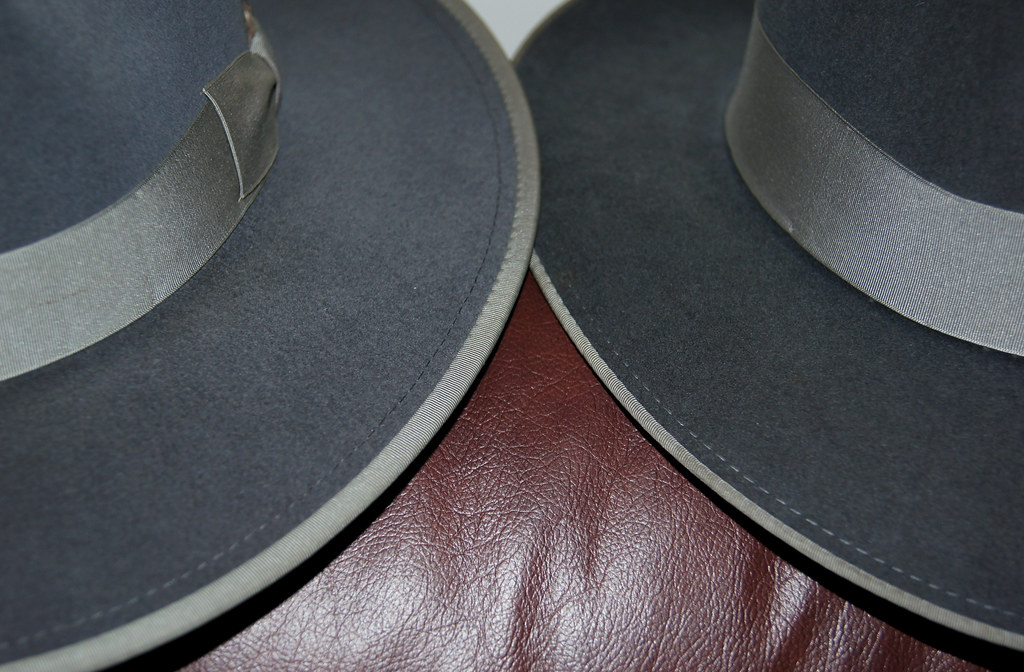
Hückel Weilheim Chevreau 1 vs Hückel Weilheim Chevreau 2 (Flash)
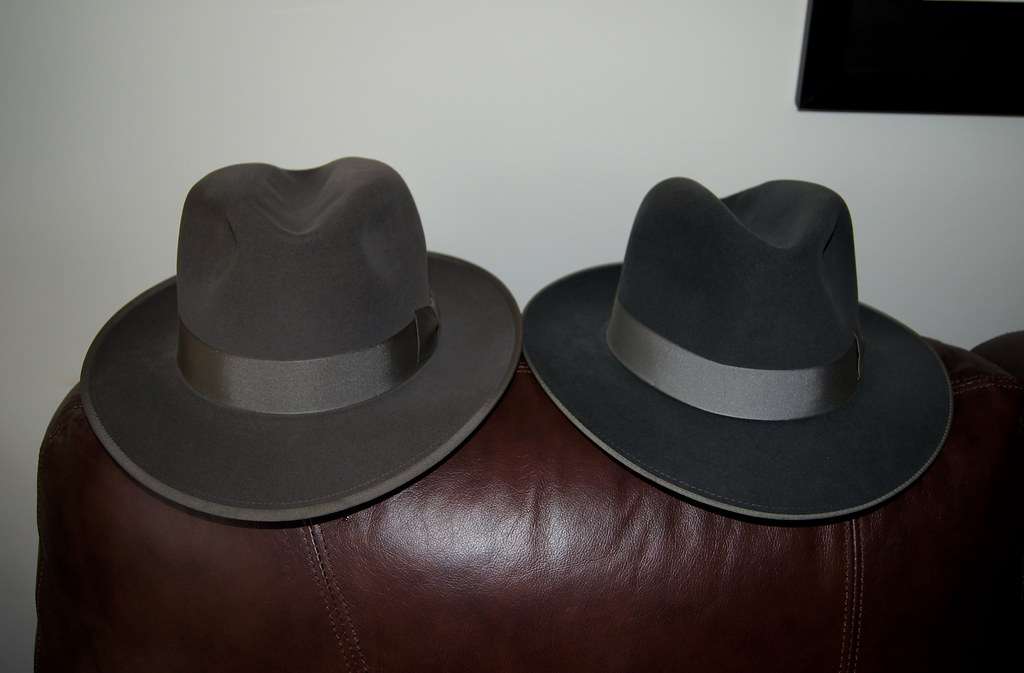
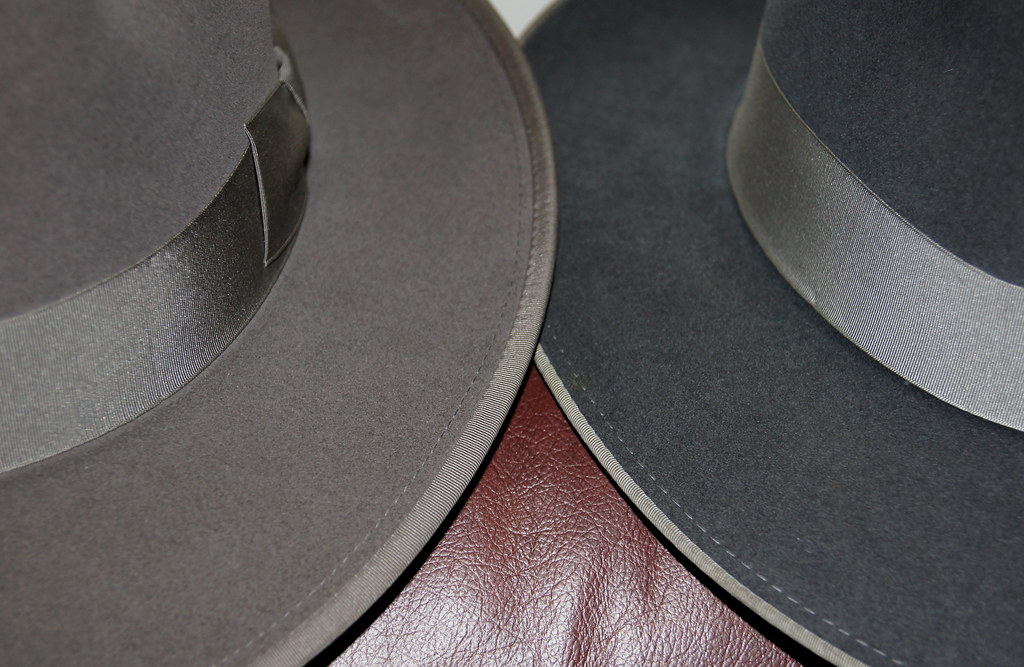
Hückel Weilheim Chevreau 1,2 Hückel Weilheim Chamois 1,2 Hückel Weilheim Chevreau 1,2 (Flash)

Click on Photos to Expand


Hückel Weilheim Chamois 2 vs Hückel Weilheim Chevreau 2 (Flash)


Hückel Weilheim Chamois 2 vs Hückel Weilheim Chevreau 1 (Flash)


Hückel Weilheim Chamois 1 vs Hückel Weilheim Chevreau 1 (Flash)


Hückel Weilheim Chamois 1 vs Hückel Weilheim Chevreau 2 (Flash)


Hückel Weilheim Chevreau 1 vs Hückel Weilheim Chevreau 2 (Flash)


Hückel Weilheim Chevreau 1,2 Hückel Weilheim Chamois 1,2 Hückel Weilheim Chevreau 1,2 (Flash)

- Messages
- 12,384
- Location
- Albany Oregon
This was a very interesting side by side Steve. I enjoy the shades of gray all lined up.Hückel Weilheim Chamois 2 vs Hückel Weilheim Chamois 1 (Flash)
Click on Photos to Expand


Hückel Weilheim Chamois 2 vs Hückel Weilheim Chevreau 2 (Flash)


Hückel Weilheim Chamois 2 vs Hückel Weilheim Chevreau 1 (Flash)


Hückel Weilheim Chamois 1 vs Hückel Weilheim Chevreau 1 (Flash)


Hückel Weilheim Chamois 1 vs Hückel Weilheim Chevreau 2 (Flash)


Hückel Weilheim Chevreau 1 vs Hückel Weilheim Chevreau 2 (Flash)


Hückel Weilheim Chevreau 1,2 Hückel Weilheim Chamois 1,2 Hückel Weilheim Chevreau 1,2 (Flash)

- Messages
- 17,708
- Location
- Maryland
Mike, Thanks!This was a very interesting side by side Steve. I enjoy the shades of gray all lined up.
Hückel Weilheim Chamois 1 vs Hückel Weilheim Chamois 2 (Sun Light)
Click on Photos to Expand

Hückel Weilheim Chevreau 1 vs. Hückel Weilheim Chamois 2 (Sun Light)

Hückel Weilheim Chevreau 1 vs Hückel Weilheim Chamois 1 (Sun Light)

Hückel Weilheim Chevreau 1 vs Hückel Weilheim Chevreau 2 (Sun Light)

It's really hard to see any difference between the Chamois and Chevreau finishes. I would say the Chamois finish has slightly more fuzz (especially Hückel Weilheim Chamois 2). The felts of both finishes are very dense with slight gloss so possibly made of Wild Hare. The felts are not super pliable as Stefan mentioned with his Chamois but the felts are of very high quality with a very soft hand.
Hückel Weilheim Chamois 2, 1 Hückel Weilheim Chevreau 2, 1, 3 (Flash)

I have three Hückel Weilheim Chevreau and two Hückel Weilheim Chamois in different shades of gray. They are all from the late 1950s very early 1960s. I also have a Hückel Weilheim Chevreau in a fantastic shade of green.
Superb comparison, Steve. A sight to see for sure. Such quality!Hückel Weilheim Chamois 2 vs Hückel Weilheim Chamois 1 (Flash)
Click on Photos to Expand


Hückel Weilheim Chamois 2 vs Hückel Weilheim Chevreau 2 (Flash)


Hückel Weilheim Chamois 2 vs Hückel Weilheim Chevreau 1 (Flash)


Hückel Weilheim Chamois 1 vs Hückel Weilheim Chevreau 1 (Flash)


Hückel Weilheim Chamois 1 vs Hückel Weilheim Chevreau 2 (Flash)


Hückel Weilheim Chevreau 1 vs Hückel Weilheim Chevreau 2 (Flash)


Hückel Weilheim Chevreau 1,2 Hückel Weilheim Chamois 1,2 Hückel Weilheim Chevreau 1,2 (Flash)

These comparisons are a perfect excuse to horse around with the hat collection. The theme today was blue homburgs. The blue homburg is a true undercover hat: it pretends to be black and it usually doesn't show its colour until you set it next to a real black hat. So you could live your entire life wearing a blue homburg without ever knowing it.
Here we go: bottom left Tirard, top left Lee , bottom center MacLachlan and bottom right Habig. Upper right is a black Habig.
Interesting is that these hats appear to derive a fair bit of their blueness from the ribbon they carry. The Habig and the Maclachlan both have a distinct blue coloured ribbon and appear to be the most blue hats. The Lee and Tirard have a more grey coloured ribbon and appear less blue. The Tirard is by far the darkest blue (bleu de nuit according to the label). All of them are high quality hats, with the Habig being the most traditional hamburg styled one. Its unwilling attitude towards side dents (or pinch) make it look a bit more rounded (or plump if you will). The Lee and Tirard are very similar in style: quite sleek looking. The American made hats have a slightly higher crown: 11,5 cm at the center dent. The Habig is the lowest at 10,5 cm at the center dent. The Lee has the widest brim at 6,5cm and the Habig the narrowest at 5,5cm. The rest sit at 6cm.
The MacLachlan has a different brim binding compared to the others: very narrow around the entire brim; nice but it does make the stotching more prominent. The European ones have a narrower brim binding in front and back (as is common for European homburgs).
Very little taper to any of the hats. The MacLachlan is blocked with the straightest sides, which makes it quite tall looking.
Not much difference in the felt: high quality all around. I'd have to give it to the MacLachlan though, which really is a gorgeous hat.
I found that I actually forgot one: a Goldsiegel. Apparently that one is so good at pretending to be black that it fooled me




Habig

MacLachlan

Lee

Tirard

Here we go: bottom left Tirard, top left Lee , bottom center MacLachlan and bottom right Habig. Upper right is a black Habig.
Interesting is that these hats appear to derive a fair bit of their blueness from the ribbon they carry. The Habig and the Maclachlan both have a distinct blue coloured ribbon and appear to be the most blue hats. The Lee and Tirard have a more grey coloured ribbon and appear less blue. The Tirard is by far the darkest blue (bleu de nuit according to the label). All of them are high quality hats, with the Habig being the most traditional hamburg styled one. Its unwilling attitude towards side dents (or pinch) make it look a bit more rounded (or plump if you will). The Lee and Tirard are very similar in style: quite sleek looking. The American made hats have a slightly higher crown: 11,5 cm at the center dent. The Habig is the lowest at 10,5 cm at the center dent. The Lee has the widest brim at 6,5cm and the Habig the narrowest at 5,5cm. The rest sit at 6cm.
The MacLachlan has a different brim binding compared to the others: very narrow around the entire brim; nice but it does make the stotching more prominent. The European ones have a narrower brim binding in front and back (as is common for European homburgs).
Very little taper to any of the hats. The MacLachlan is blocked with the straightest sides, which makes it quite tall looking.
Not much difference in the felt: high quality all around. I'd have to give it to the MacLachlan though, which really is a gorgeous hat.
I found that I actually forgot one: a Goldsiegel. Apparently that one is so good at pretending to be black that it fooled me
Habig
MacLachlan
Lee
Tirard
Featured products
-
 John Lofgren Monkey Boots Shinki Horsebuttt - $1,136 The classic monkey boot silhouette in an incredibly rich Shinki russet horse leather.
John Lofgren Monkey Boots Shinki Horsebuttt - $1,136 The classic monkey boot silhouette in an incredibly rich Shinki russet horse leather. -
 Grant Stone Diesel Boot Dark Olive Chromexcel - $395 Goodyear welted, Horween Chromexcel, classic good looks.
Grant Stone Diesel Boot Dark Olive Chromexcel - $395 Goodyear welted, Horween Chromexcel, classic good looks. -
 Schott 568 Vandals Jacket - $1,250 The classic Perfecto motorcycle jacket, in a very special limited-edition Schott double rider style.
Schott 568 Vandals Jacket - $1,250 The classic Perfecto motorcycle jacket, in a very special limited-edition Schott double rider style.
- Messages
- 17,708
- Location
- Maryland
Stefan, Thanks!Superb comparison, Steve. A sight to see for sure. Such quality!
M Hatman
I'll Lock Up
- Messages
- 4,569
Really well done comparisons ......simply awsome hats!These comparisons are a perfect excuse to horse around with the hat collection. The theme today was blue homburgs. The blue homburg is a true undercover hat: it pretends to be black and it usually doesn't show its colour until you set it next to a real black hat. So you could live your entire life wearing a blue homburg without ever knowing it.
Here we go: bottom left Tirard, top left Lee , bottom center MacLachlan and bottom right Habig. Upper right is a black Habig.
Interesting is that these hats appear to derive a fair bit of their blueness from the ribbon they carry. The Habig and the Maclachlan both have a distinct blue coloured ribbon and appear to be the most blue hats. The Lee and Tirard have a more grey coloured ribbon and appear less blue. The Tirard is by far the darkest blue (bleu de nuit according to the label). All of them are high quality hats, with the Habig being the most traditional hamburg styled one. Its unwilling attitude towards side dents (or pinch) make it look a bit more rounded (or plump if you will). The Lee and Tirard are very similar in style: quite sleek looking. The American made hats have a slightly higher crown: 11,5 cm at the center dent. The Habig is the lowest at 10,5 cm at the center dent. The Lee has the widest brim at 6,5cm and the Habig the narrowest at 5,5cm. The rest sit at 6cm.
The MacLachlan has a different brim binding compared to the others: very narrow around the entire brim; nice but it does make the stotching more prominent. The European ones have a narrower brim binding in front and back (as is common for European homburgs).
Very little taper to any of the hats. The MacLachlan is blocked with the straightest sides, which makes it quite tall looking.
Not much difference in the felt: high quality all around. I'd have to give it to the MacLachlan though, which really is a gorgeous hat.
I found that I actually forgot one: a Goldsiegel. Apparently that one is so good at pretending to be black that it fooled me
View attachment 127620 View attachment 127621 View attachment 127622 View attachment 127623
Habig
View attachment 127624
MacLachlan
View attachment 127625
Lee
View attachment 127626
Tirard
View attachment 127627
M
- Messages
- 17,708
- Location
- Maryland
Stefan, Great comparison! I really enjoyed see all these Blue Homburgs together. Your photos are really fantastic too. I don't have a good natural light source without going outside.These comparisons are a perfect excuse to horse around with the hat collection. The theme today was blue homburgs. The blue homburg is a true undercover hat: it pretends to be black and it usually doesn't show its colour until you set it next to a real black hat. So you could live your entire life wearing a blue homburg without ever knowing it.
Here we go: bottom left Tirard, top left Lee , bottom center MacLachlan and bottom right Habig. Upper right is a black Habig.
Interesting is that these hats appear to derive a fair bit of their blueness from the ribbon they carry. The Habig and the Maclachlan both have a distinct blue coloured ribbon and appear to be the most blue hats. The Lee and Tirard have a more grey coloured ribbon and appear less blue. The Tirard is by far the darkest blue (bleu de nuit according to the label). All of them are high quality hats, with the Habig being the most traditional hamburg styled one. Its unwilling attitude towards side dents (or pinch) make it look a bit more rounded (or plump if you will). The Lee and Tirard are very similar in style: quite sleek looking. The American made hats have a slightly higher crown: 11,5 cm at the center dent. The Habig is the lowest at 10,5 cm at the center dent. The Lee has the widest brim at 6,5cm and the Habig the narrowest at 5,5cm. The rest sit at 6cm.
The MacLachlan has a different brim binding compared to the others: very narrow around the entire brim; nice but it does make the stotching more prominent. The European ones have a narrower brim binding in front and back (as is common for European homburgs).
Very little taper to any of the hats. The MacLachlan is blocked with the straightest sides, which makes it quite tall looking.
Not much difference in the felt: high quality all around. I'd have to give it to the MacLachlan though, which really is a gorgeous hat.
I found that I actually forgot one: a Goldsiegel. Apparently that one is so good at pretending to be black that it fooled me
View attachment 127620 View attachment 127621 View attachment 127622 View attachment 127623
Habig
View attachment 127624
MacLachlan
View attachment 127625
Lee
View attachment 127626
Tirard
View attachment 127627
AbbaDatDeHat
I'll Lock Up
- Messages
- 8,939
Stellar all Stefan!!These comparisons are a perfect excuse to horse around with the hat collection. The theme today was blue homburgs. The blue homburg is a true undercover hat: it pretends to be black and it usually doesn't show its colour until you set it next to a real black hat. So you could live your entire life wearing a blue homburg without ever knowing it.
Here we go: bottom left Tirard, top left Lee , bottom center MacLachlan and bottom right Habig. Upper right is a black Habig.
Interesting is that these hats appear to derive a fair bit of their blueness from the ribbon they carry. The Habig and the Maclachlan both have a distinct blue coloured ribbon and appear to be the most blue hats. The Lee and Tirard have a more grey coloured ribbon and appear less blue. The Tirard is by far the darkest blue (bleu de nuit according to the label). All of them are high quality hats, with the Habig being the most traditional hamburg styled one. Its unwilling attitude towards side dents (or pinch) make it look a bit more rounded (or plump if you will). The Lee and Tirard are very similar in style: quite sleek looking. The American made hats have a slightly higher crown: 11,5 cm at the center dent. The Habig is the lowest at 10,5 cm at the center dent. The Lee has the widest brim at 6,5cm and the Habig the narrowest at 5,5cm. The rest sit at 6cm.
The MacLachlan has a different brim binding compared to the others: very narrow around the entire brim; nice but it does make the stotching more prominent. The European ones have a narrower brim binding in front and back (as is common for European homburgs).
Very little taper to any of the hats. The MacLachlan is blocked with the straightest sides, which makes it quite tall looking.
Not much difference in the felt: high quality all around. I'd have to give it to the MacLachlan though, which really is a gorgeous hat.
I found that I actually forgot one: a Goldsiegel. Apparently that one is so good at pretending to be black that it fooled me
View attachment 127620 View attachment 127621 View attachment 127622 View attachment 127623
Habig
View attachment 127624
MacLachlan
View attachment 127625
Lee
View attachment 127626
Tirard
View attachment 127627
But i’m going with the Mac in all catagories: color, ribbon, shape, trim. Especially color!! Dark vibrant!
Thanks for sharing.
B
Really well done comparisons ......simply awsome hats!
M
Stefan, Great comparison! I really enjoyed see all these Blue Homburgs together. Your photos are really fantastic too. I don't have a good natural light source without going outside.
Mark, Steve, Bowen, thank you. These really are a lot of fun to do and gives me the chance too to see similar hats in my collection next to eachother.Stellar all Stefan!!
But i’m going with the Mac in all catagories: color, ribbon, shape, trim. Especially color!! Dark vibrant!
Thanks for sharing.
B
Another one. The theme is a bit more strained, but let's say my big Stetson hats. Some of these Stetson hats have quite some presence, even though that is belied by their actual measurements. Here are a few of them.
From left to right: Stetson The Sovereign Twenty, Stetson Sovereign (made under license), Imperial Stetson (made under license). Sitting in the back is my Cavanagh, another one of those big hats, for comparison.
The difference between both Sovereigns is quite striking: the brown one dwarfs the grey licensed one. The crown is higher (11,5 cm versus 10,5cm) and the brim is wider (7cm versus 5,5cm). And it has a mode edge too. In measurements and general feel it sits much closer to the Stetson Imperial, which was made under license too. There's just 0,5 cm difference in crown height and brim width and both have a mode edge.
The Stetson Imperial is the winner feltwise; soft and pliable with a lovely hand and a nice deep-brown colour. The Cavanagh does not compete in this comparison, but its colour sits in between the two Stetsons, has a excellent hand, but is more stiff than either of them.
Where the felted edges are concerned you'd expect the inventor of them to win, but actually I think the mode edge on the Stetson Imperial is the best one. It has a nice rounded and narrow profile and most feels like it's actually fully felted. The other two, no matter how nice they are, seem more to be folded over, fastened with basting stitches and then felted, which leaves them a bit more flat and square looking. Finishing on all of them is of high quality, with the grey Stetson, which is definitely a later hat, trailing a bit. The Cavanagh wins in this department.






And then you get to wear them all too of course.
Stetson The Sovereign Twenty

Cavanagh

Stetson Imperial (made under license)

Stetson Sovereign (made under license)

From left to right: Stetson The Sovereign Twenty, Stetson Sovereign (made under license), Imperial Stetson (made under license). Sitting in the back is my Cavanagh, another one of those big hats, for comparison.
The difference between both Sovereigns is quite striking: the brown one dwarfs the grey licensed one. The crown is higher (11,5 cm versus 10,5cm) and the brim is wider (7cm versus 5,5cm). And it has a mode edge too. In measurements and general feel it sits much closer to the Stetson Imperial, which was made under license too. There's just 0,5 cm difference in crown height and brim width and both have a mode edge.
The Stetson Imperial is the winner feltwise; soft and pliable with a lovely hand and a nice deep-brown colour. The Cavanagh does not compete in this comparison, but its colour sits in between the two Stetsons, has a excellent hand, but is more stiff than either of them.
Where the felted edges are concerned you'd expect the inventor of them to win, but actually I think the mode edge on the Stetson Imperial is the best one. It has a nice rounded and narrow profile and most feels like it's actually fully felted. The other two, no matter how nice they are, seem more to be folded over, fastened with basting stitches and then felted, which leaves them a bit more flat and square looking. Finishing on all of them is of high quality, with the grey Stetson, which is definitely a later hat, trailing a bit. The Cavanagh wins in this department.
And then you get to wear them all too of course.
Stetson The Sovereign Twenty
Cavanagh
Stetson Imperial (made under license)
Stetson Sovereign (made under license)
M Hatman
I'll Lock Up
- Messages
- 4,569
Another nice set of comparisons!!! You make an interesting observation regarding the size of the American hats. This is something I have noticed too, on American vs European hats, that at any given point in time it seems the American hats just have a great deal more presence....this is true for the Borsa's made for our market too.......I have one made for the Italian market and originally sold there (thanks to Daniele Tanto) that was notably much grander and more massive than the usual fare and therefore quite unusual to him. I found it to my liking and purchased it and it is much more of the American hat dimensions for the time, and of course, I love it!!! In general the European hats tend to have shorter tapered crowns and narrower brims than their counterparts over here......I suppose we are just too cowboy to put up with a smaller proportioned hat!


And that's my story and I am sticking to it!!!! A little bit of Texas in ALL of us over here!!!
A little bit of Texas in ALL of us over here!!!
M
And that's my story and I am sticking to it!!!!
M
Last edited:
Daniele Tanto
I'll Lock Up
- Messages
- 4,352
- Location
- Verona - Italia
I like very much the homburg, all you know in particular the blue, but I have often been unlucky in my search. I have very few of them and now four are under my eyes. What a pleasure!These comparisons are a perfect excuse to horse around with the hat collection. The theme today was blue homburgs. The blue homburg is a true undercover hat: it pretends to be black and it usually doesn't show its colour until you set it next to a real black hat. So you could live your entire life wearing a blue homburg without ever knowing it.
Here we go: bottom left Tirard, top left Lee , bottom center MacLachlan and bottom right Habig. Upper right is a black Habig.
Interesting is that these hats appear to derive a fair bit of their blueness from the ribbon they carry. The Habig and the Maclachlan both have a distinct blue coloured ribbon and appear to be the most blue hats. The Lee and Tirard have a more grey coloured ribbon and appear less blue. The Tirard is by far the darkest blue (bleu de nuit according to the label). All of them are high quality hats, with the Habig being the most traditional hamburg styled one. Its unwilling attitude towards side dents (or pinch) make it look a bit more rounded (or plump if you will). The Lee and Tirard are very similar in style: quite sleek looking. The American made hats have a slightly higher crown: 11,5 cm at the center dent. The Habig is the lowest at 10,5 cm at the center dent. The Lee has the widest brim at 6,5cm and the Habig the narrowest at 5,5cm. The rest sit at 6cm.
The MacLachlan has a different brim binding compared to the others: very narrow around the entire brim; nice but it does make the stotching more prominent. The European ones have a narrower brim binding in front and back (as is common for European homburgs).
Very little taper to any of the hats. The MacLachlan is blocked with the straightest sides, which makes it quite tall looking.
Not much difference in the felt: high quality all around. I'd have to give it to the MacLachlan though, which really is a gorgeous hat.
I found that I actually forgot one: a Goldsiegel. Apparently that one is so good at pretending to be black that it fooled me

Very interesting comparison between the Stetson, original and licensed. The shape is impressive and somewhat repetitive, but it is only my taste, however, they are hats that I would like to have in my collection!Another one. The theme is a bit more strained, but let's say my big Stetson hats. Some of these Stetson hats have quite some presence, even though that is belied by their actual measurements. Here are a few of them.
From left to right: Stetson The Sovereign Twenty, Stetson Sovereign (made under license), Imperial Stetson (made under license). Sitting in the back is my Cavanagh, another one of those big hats, for comparison.
The difference between both Sovereigns is quite striking: the brown one dwarfs the grey licensed one. The crown is higher (11,5 cm versus 10,5cm) and the brim is wider (7cm versus 5,5cm). And it has a mode edge too. In measurements and general feel it sits much closer to the Stetson Imperial, which was made under license too. There's just 0,5 cm difference in crown height and brim width and both have a mode edge.
The Stetson Imperial is the winner feltwise; soft and pliable with a lovely hand and a nice deep-brown colour. The Cavanagh does not compete in this comparison, but its colour sits in between the two Stetsons, has a excellent hand, but is more stiff than either of them.
Where the felted edges are concerned you'd expect the inventor of them to win, but actually I think the mode edge on the Stetson Imperial is the best one. It has a nice rounded and narrow profile and most feels like it's actually fully felted. The other two, no matter how nice they are, seem more to be folded over, fastened with basting stitches and then felted, which leaves them a bit more flat and square looking. Finishing on all of them is of high quality, with the grey Stetson, which is definitely a later hat, trailing a bit. The Cavanagh wins in this department.

Bravissimo Stefan e complimenti!
Similar threads
- Replies
- 15
- Views
- 5K
- Replies
- 4
- Views
- 542
Members online
- wbk66
- BarryMcCockiner_PhD
- torfjord
- DonR
- Carrie @ Thurston Bros.
- aztecasteve
- AeroFan_07
- Tiki Tom
- barthestole
- Motocann
- Dortreo
- Denimjacket
- erwinkn
- Boyo
- PackRedman
- quikrick
- Faithmusic
- Larry Dart
- 111Joel111
- JackBroChill
- Fading Fast
- CosmoSix5
- tweedydon
- TheWickerMan
- Mplouis54
- Bkcmart
- SpruceMoose
- Olumin
- Alphahunter
- Bobby Schneider
- lepilo
- Juhani
- busterbluth20
- dangibbons1981
- Fedster
- gily
- joezam713
- dinhnguyen57
- 01flhr
- OldManFung
- Heritage_Brand_Guy
- Cesur
- bbarkley
- LA23beswak
- Jonanah
- Igneous629
- photo2u
- GenoLou
- obiwanjabroni
- barnabus
Total: 1,996 (members: 88, guests: 1,908)